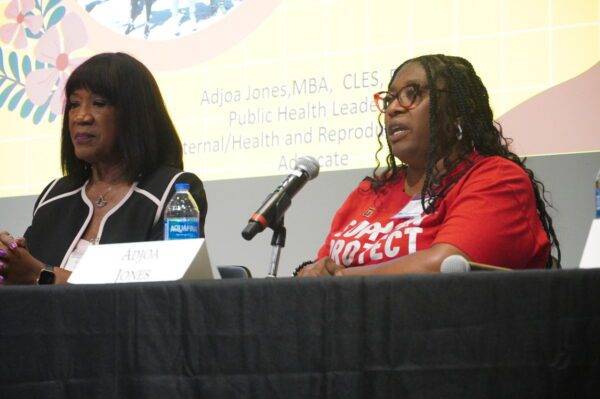By: American Institute for Cancer Research and Karen Collins
Alcohol is linked to at least seven types of cancer and is the third leading preventable cause of cancer, after smoking and obesity.
The link between alcohol and cancer is back in the spotlight after the launch of a new report from the U.S. Surgeon General. AICR’s Recommendations for Cancer Prevention have long included advice to limit alcohol consumption. Let’s break down what this means for you and your health.
What We Know about Alcohol and Cancer
Drinking alcohol raises your risk of cancer. Here’s how this new report summarizes what decades of research show:
Alcohol is the third leading preventable cause of cancer in the United States. About 20,000 alcohol-related cancer deaths occur each year. Only smoking and obesity cause more cases of preventable cancer. That’s more than the number of alcohol-associated traffic fatalities in the United States. According to the Surgeon General’s report, deaths from alcohol-related cancers shorten lives by an average of 15 years.
Cancer risk begins to increase even at low levels of alcohol consumption. The more you drink, the higher your risk becomes. Nearly three out of four American adults reported drinking alcohol at least once a week in 2019–2020; however, less than half of U.S. adults know about the connection between alcohol and cancer risk, according to an AICR consumer survey. That means many people are increasing their cancer risk without realizing it.
Alcohol can cause at least seven types of cancer, including:
Breast cancer, Colorectal cancer, Esophageal cancer, Liver cancer, Mouth cancer, Pharynx (throat) cancer, Larynx (voice box) cancer.
Researchers conclude that there is no level of alcohol consumption that could be labeled as “safe” with regard to cancer risk. But the risk is not all-or-nothing, and the less alcohol you drink, the more you lower your cancer risk.
How Alcohol Causes Cancer
You might wonder how alcohol leads to cancer. Here are the main ways:
DNA damage: When your body breaks down alcohol, it makes a harmful chemical called acetaldehyde. This chemical can damage DNA, causing changes in genes that control the way cells grow and multiply.
This can lead to cells growing out of control, which is what cancer is.
Oxidative Stress: Alcohol can create unstable molecules in your body called free radicals. These can damage cells and DNA, potentially leading to cancer.
Hormone Disruption: Alcohol can cause changes in the body’s hormone levels. For example, it can increase levels of estrogen in the body, which increases the risk of breast cancer.
Changes in what can enter body cells: Alcohol may act like a solvent, allowing cancer-causing compounds to enter cells more easily (e.g., harmful compounds in tobacco smoke).
What Is “One Drink?”
When recommendations talk about the number of drinks a day or a week, that’s referring to one standard alcoholic drink, which is defined based on alcohol content. Here’s what counts as one standard drink:
12 ounces of regular-strength beer, 8–9 ounces of malt liquor, 5 ounces of wine, and 1.5 ounces of 80-proof spirits.
Many bars and restaurants serve larger portions than these standard sizes. A large glass of wine in a restaurant might actually be two standard drinks.
Beware of hidden alcohol: Some drinks contain more alcohol than you might think:
A pint of strong beer (8 percent alcohol) is actually 2.1 standard drinks.
An extra-dry martini (4 oz) is about 1.4 standard drinks.
A 5-ounce glass of higher-alcohol wine, like Cabernet Sauvignon or Zinfandel (up to16 percent alcohol), is about 1.3 standard drinks.
What Are the Alcohol Guidelines?
Both the alcohol content and portion size should be considered when you choose to drink. Any amount of alcohol can increase your cancer risk. But the more you drink, the higher the risk.
Most alcohol-related cancer deaths happen in people who drink more than the current definition of moderate drinking, which is defined as “no more than one drink a day for women, no more than two drinks a day for men.” For some cancers, like breast and mouth cancers, risk may go up even with less than one drink a day.
Cancer risk is not all-or-nothing. For people whose drinking habits are within the current guidelines (“moderate drinkers”), drinking less alcohol and lowering frequency will still reduce their cancer risk. For heavy drinkers who typically exceed the drinking guidelines, cutting back to “moderate drinking” will help lower cancer risk.
Common Questions about Alcohol and Cancer
Here are answers to some frequent questions about alcohol and cancer:
Q: Does the type of alcohol matter?
A: No. All types of alcohol (beer, wine, spirits) can increase cancer risk. It’s the alcohol itself that’s harmful, not the other ingredients.
Q: Can I drink in moderation without worry?
A: Even light drinking can raise risk for certain types of cancer. There’s no “safe” amount of alcohol when it comes to cancer. However, if you do choose to drink, drinking less, and less frequently, is always better.
Q: If I stop drinking, will my cancer risk go down?
A: The research is unclear about the reversibility of cancer risk caused by alcohol. However, limiting or stopping drinking alcohol will help to avoid adding additional risk.
Q: I thought red wine was good for my heart. Should I still drink it?
A: While some studies suggest that red wine might have heart benefits, those studies have been questioned. The cancer risks outweigh any potential benefits. Also, there are safer ways to protect your heart, like exercise and a healthy diet.
Q: Does alcohol only affect cancer risk or are there other health concerns?
A: Alcohol can also lead to other health problems, like liver disease, heart disease and high blood pressure. It can also increase the risk of accidents and injuries.
Q: I only drink on weekends. Does this still increase my cancer risk?
A: Cancer risk increases with any level of regular drinking. Studies have also shown that occasional episodes of heavy drinking (binge drinking) are linked to higher risk, even in lifetime moderate drinkers. It’s also very clear that periodically drinking heavily increases risk of heart disease, liver disease, accidents and injuries. It’s not just about how often you drink, but also how much you drink when you do.
Q: Can I offset the cancer risk from alcohol by living a healthy lifestyle in other ways?
A: While a healthy lifestyle is always good, it can’t eliminate the cancer risk from alcohol. The best way to lower your risk is with a healthy lifestyle that includes limiting or avoiding alcohol.
What You Can Do: Practical Tips
By reducing alcohol consumption, you may find you have more energy, sleep better and feel healthier overall. These benefits can improve your quality of life right now, while also reducing your cancer risk for the future.
Changing your drinking habits can be challenging. Here are some strategies to help:
Set Clear Goals: Decide how much you want to cut back and by when. Write these goals down.
Track Your Drinks: Use a journal or smartphone app to log how much you drink. This can help you stay aware and accountable.
Find Support: Tell friends and family about your goals. Consider joining a support group if you’re finding it hard to cut back. Talk with your health care provider for suggestions.
Identify Triggers: Notice what situations make you want to drink. Plan ahead for how to handle these situations.
Reward Progress: Celebrate your successes, no matter how small. Maybe use the money you save from not drinking to buy something you want.
Be Patient: Changing habits takes time. If you slip up, don’t give up. Learn from it and keep going.
Replace the Habit: Find new activities to replace drinking. This could be exercise, meditation, or a new hobby.
Try non-alcoholic drinks. But don’t replace alcohol with sugar-sweetened beverages. Instead try out options like unsweetened seltzer, club soda with a few splashes of juice, or a spicy tomato juice drink. Sample the growing number of beers, wines and spirits that are alcohol-free (with no more than a trace of alcohol) or non-alcoholic (which may contain up to 0.5 percent alcohol, much lower than standard drinks).
For more about the research on alcohol and cancer risk—plus tips for limiting how much you drink— check the AICR website.
Tips for Drinking Less at Social Events
Practice saying “no thanks” when offered a drink. You don’t need to provide an explanation or excuse.
Avoid “topping up” your glass before it’s empty.
Enjoy two non-alcoholic drinks before having one alcoholic drink.
Be the designated driver.
Plan activities that don’t revolve around drinking, like playing sports or watching movies.
The Big Picture: Cancer Prevention
Limiting alcohol is just one part of lowering your cancer risk. Here are other important steps:
Don’t smoke or use tobacco products.
Stay at a weight that’s healthy for you.
Be physically active for at least 30 minutes a day. That can be any exercise you enjoy or even doing chores around the house.
Eat a diet rich in vegetables, fruits and whole grains.
Limit sugar-sweetened drinks and foods high in added sugars, refined grains and unhealthy fats.
Limit red meat and avoid processed meat.
Protect your skin from the sun.
Get recommended cancer screenings to catch any cancers or pre-cancers at their earliest, most treatable stage.
Remember, these steps work together. By building these choices into a lifestyle that works for you, you can meaningfully lower your overall cancer risk.
Understanding the link between alcohol and cancer is empowering. It gives you the knowledge to make choices that impact your health. It’s never too late to make a positive change. The best choice for cancer prevention is not to drink alcohol. If you do choose to drink, less is better.





